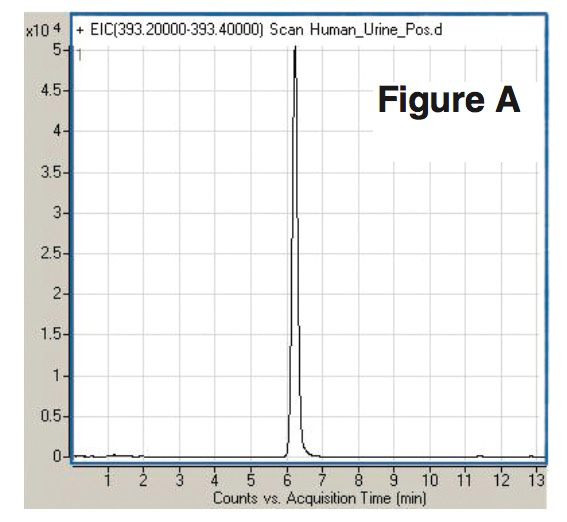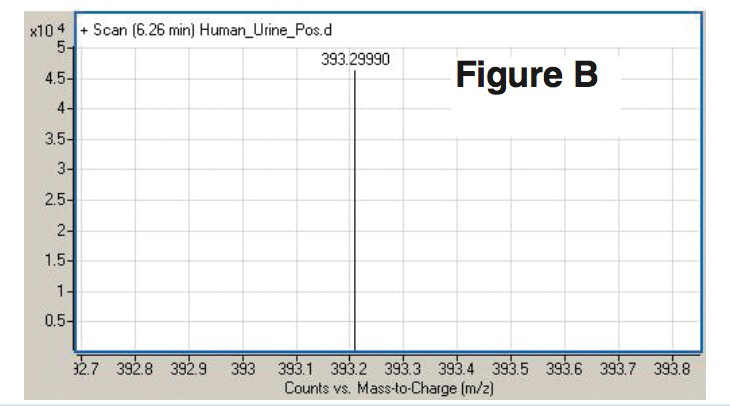Chenodeoxycholic Acid (CDCA) Separation in LCMS
The presence of an important bile acid, Chenodeoxycholic Acid, in human urine was detected using a simple Mobile Phase with the Method below. In addition to being simple and easy, it also provides a fast Equilibration between runs even while using a Gradient, for higher throughput.
Peak:
Chenodeoxycholic Acid 393.29994 m/z (M+H)+ , RT = 6.26 minute
Method Conditions
Column: Cogent Diamond Hydride™, 4μm, 100Å
Catalog No.: 70000-15P-2
Dimensions: 2.1 x 150mm
Mobile Phase:
—A: DI Water / 0.1% Formic Acid
—B: Acetonitrile / 0.1% Formic Acid
Gradient:
| Time (minutes) | %B |
| 0 | 95 |
| 0.2 | 95 |
| 7 | 85 |
| 8 | 85 |
| 10 | 50 |
| 11 | 50 |
| 11.1 | 95 |
| 14 | 95 |
Flow rate: 0.4mL / minute
Detection: ESI – pos – Agilent 6210 MSD TOF Mass Spectrometer
Sample Preparation: Human urine – after simple extraction.
t0: 1.44 minutes
Notes: Urinary levels of bile acids are expected to be a useful index of liver function. Also bile acid concentrations in urine obtained from patients with Cerebrotendinous Xanthomatosis are different from those of normal subjects and should be useful for diagnosis and may be used for routine Assays of biological fluids. In addition unique biological activities have been identified for bile acids, especially Chenodeoxycholic Acid has an effect on human ovarian cancer cell lines A2780 and A2780-CP, the last one being Cisplatin resistant. CDCA may be used in treatment of Ovarian Cancer. Synthetic bile acid derivatives are lead compounds in creation of new drugs useful for prostate cancer therapy.
Attachment
No 55 Chenodeoxycholic Acid in Urine Analyzed with LCMS pdf 0.2 Mb Download File




